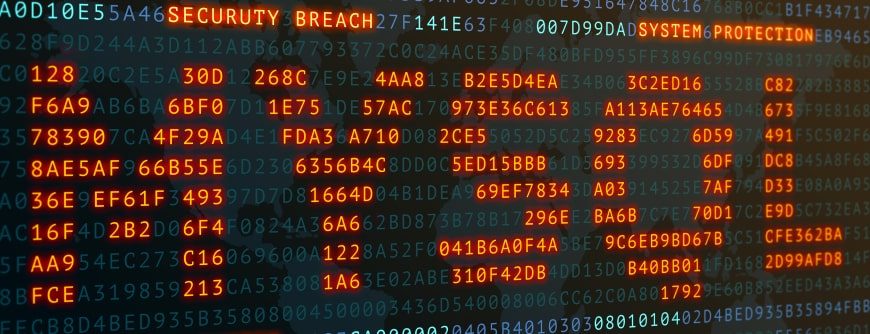MariaDB 是免費的開源關聯式資料庫管理系統(RDBMS )。它是由 MySQL 的原始開發人員所建立,因為 MySQL 擔心在 Oracle 於 2009 年收購 MySQL 後將會進行商業化。
MariaDB 以 C 和 C++ 編寫,並支援多種程式設計語言,包括 C、C#、Java、Python、PHP 和 Perl。MariaDB 也支援所有主要作業系統,包括 Windows、Linux 和 macOS。
雖然它是一個關聯式資料庫,但 MariaDB 在 10 版中提供類似 NoSQL 的功能。Connect 引擎可讓您從 MariaDB 中輕鬆存取非結構化資料,而動態欄則允許 NoSQL 類型儲存相同行中的不同類型物件。
MariaDB 的用途為何?
MariaDB 提供與 MySQL 相同的功能,可以直接取代 MySQL 資料庫伺服器(即 MySQL 可以解除安裝,MariaDB 安裝時不需做其他變更)。MariaDB 專為速度、可靠性和易用性而設計,可用於小型和企業處理任務。
為何稱為 MariaDB
MariaDB 從共同創辦人 Michael “Monty” Widenius 的其中一個女兒獲得其名字。MySQL 現為 Oracle 的商標,以其女兒 My 命名。MariaDB 遵循同樣的傳統,以小女兒 Maria 的名字命名。MariaDB 的名稱最初用於儲存引擎,更名為 Aria。
MariaDB 是什麼樣的資料庫?
MariaDB 是一個開放式來源的關聯式資料庫管理系統。RDBMS 是常見的資料庫類型,可管理預先定義的資料間關係,其中的資料會組織成一組表格、欄和列。
表格內的欄儲存資料屬性,每行都是記錄,每個屬性都有值。唯一的 ID 或主金鑰,可讓您在資料之間建立關係。關聯式資料庫模型廣泛用於各種規模的組織。
何時該使用 MariaDB
交易處理
MariaDB 非常適合需要支援頻繁查詢、快速回應時間及處理少量資料的企業交易應用程式。其 InnoDB 儲存引擎支援符合 ACID 規範的交易,並確保每筆交易都視為單一單位處理。
網路應用程式
MariaDB 能與網路應用程式和電子商務平台完美配合,其多執行緒機制能處理比其他資料庫系統更高的負載。由於 MariaDB 具備多執行緒模型和高效能,因此可以橫向擴充,讓您的應用程式或網站處理流量飆升或業務快速成長的問題。
三個 MariaDB 查詢範例
MariaDB 查詢與 MySQL 類似,看起來像標準的 SQL 查詢。以下是 MariaDB 查詢的三個範例:
從表格擷取客戶資訊:
選擇客戶名字、姓氏、地址、城市、州、郵遞區號;
插入列:
填入客戶(名字、姓氏、地址、城市)
VALUES ('Andrew', 'Williams', ‘75 Rose View’, 'Miami', ‘FL’, 33126);
更新客戶資訊:
更新客戶設定地址 = “175 Ocean City”,姓氏 = ‘Williams’;
MariaDB 可以處理哪些資料類型?
MariaDB 支援多種 SQL 資料類型,包括數字、字串、日期和時間。
- 數字資料類型:Tinyint、Boolean、smallint、medint、int、zerofill、 bigint、十進位、Floot、Double 和 bit
- 日期和時間資料類型:日期、時間、日期時間、時間戳記和年份
- 字串資料類型:字串文字、字元、varchar、二進位、變數、tinyblob、blob、mediadblob、longblob、長文字、tinytext、文字、mediatext、enum 和 set
- 其他資料類型:幾何特性、自動增加、資料類型儲存需求、自動增加_常見問題集和空值
MariaDB 是否有原生客戶?
MariaDB 隨附原生 MySQL 命令列用戶端,可支援互動式和非互動式使用。以互動方式使用時,查詢結果會以 ASCII 表格格式顯示,而以非互動方式使用(即作為篩選)時,結果會以分頁分隔的格式顯示。可使用指令選項變更輸出格式。
如何下載 MariaDB
您可以從 MariaDB 網站 下載目前穩定版本的 MariaDB。如果您正在尋找其他的 MariaDB 產品與工具進行開發與生產,您可以在 MariaDB 產品與工具頁面找到。
MariaDB 的原始程式碼可從 GitHub 下載。
MariaDB 要花多少錢?
MariaDB Community Server 是依據 GNU Public License v2 發行,保證永遠免費且開放原始碼。MariaDB Community Server 在 JSON 支援上具備 SQL、與 Oracle 和 MySQL 相容、支援多個儲存引擎,以及即時分析。
MariaDB 也提供企業級和雲端版本。MariaDB Enterprise 包含 MariaDB MaxScale、應用程式與整合連接器、管理工具,以及技術支援。您可以要求自訂報價來購買 MariaDB Enterprise。
雲端版 MariaDB 的 SkySQL 提供雲端環境的高可用性、可擴充性和安全性。它支援多個工作負載、災害復原和主動監控。MariaDB SkySQL 提供 500 美元的點數,每小時 0.1702 美元起。
回答了四個 MariaDB 問題
MariaDB 由誰建立?
MariaDB 由 MySQL AB(現為 MariaDB Corporation)的創辦人暨 MariaDB Foundation 的創始成員 Michael “Monty” Widenius 創立。MySQL 的部分原始開發人員也參與 MariaDB 的開發。MySQL AB 成立於 1995 年,於 2008 年被 Sun Microsystems 收購。Sun 於 2010 年被 Oracle 收購。
MariaDB 與 MySQL 向下相容嗎?
MariaDB 使用 MySQL 的同等版本保持最新狀態,直到 5.5 版為止,並作為“插入式替換”功能,但有一些限制。MariaDB 的資料檔案和用戶端協定通常與 MySQL 等同檔案相容。
從 MySQL 升級到 MariaDB 仍是一個簡單的流程。大多數時候,您只需要解除安裝 MySQL 並安裝 MariaDB,就不必轉換資料檔案。然而,MariaDB 有幾種新的選項、擴充功能、儲存引擎,以及錯誤修正功能,都無法從 MySQL 中找到。
為什麼我應該使用 MariaDB 而不是 MySQL?
雖然 MariaDB 保留了 MySQL 的許多功能,但它比 MySQL 還具有幾個強大的內建功能和效能提升,包括:
- 授權模式:MariaDB 和 MySQL 皆可作為開放原始碼資料庫使用,社群版本在 GPLv2 下。雖然 MariaDB 提供具有社群版本的全功能套件,但 MySQL 僅提供一些功能,如企業版的執行緒混和。
- 效能:MariaDB 在查詢檢視和處理快閃儲存時,比 MySQL 的效能更好。MySQL 會查詢所有連接到檢視的表格。MariaDB 僅透過查詢查詢所需的表格來優化流程。MariaDB 也提供 MyRocks 儲存引擎和 RocksDB,其設計旨在透過快閃儲存提供更佳效能。
- 多執行緒:MariaDB 的執行緒集區功能可同時處理多達 200,000 個連線。此功能僅適用於 MySQL Enterprise 版本。
- 更多儲存引擎:MariaDB 的儲存引擎和外掛程式比 MySQL 還多,包括 Aria、Connect、Sprider 共享,以及 TokuDB 處理大數據。
更棒的是:MariaDB 或 MySQL?
MariaDB 和 MySQL 都很強大,而且都為組織提供優勢。因此,最適合您的就是能夠滿足您的業務需求。MySQL 已經存在很長時間,並擁有更多資源和支援的大型組織。這樣可以加快錯誤修復和新功能的發佈。
另一方面,MariaDB 仰賴社群支援,但能帶來更快的效能和更多儲存引擎,讓您儲存不同類型的資料。MariaDB 與 MySQL 類似,可直接取代,讓您從其他功能中獲益。
為開源工作負載打造現代化資料體驗
MariaDB 是一款開源且永遠免費的 MySQL 替代方案,可透過多個儲存引擎提供更高的效率、增強的資料庫效能,並支援各種資料類型。
Pure Storage® 為您的開源資料庫工作負載提供數種現代化雲端資料儲存方案:。
FlashBlade® 全快閃儲存陣列與 Purity FlashBlade儲存管理軟體的速度與效能,讓資料儲存保持簡單、無縫與永續性。打造現代化資料體驗 的設計符合當今創新業務的需求。


